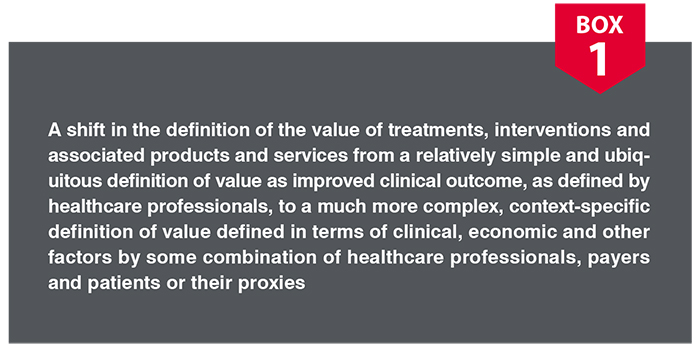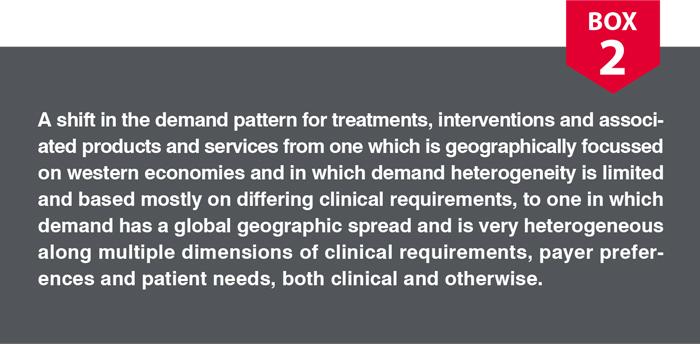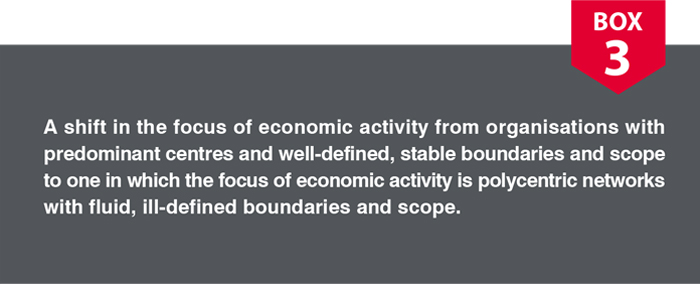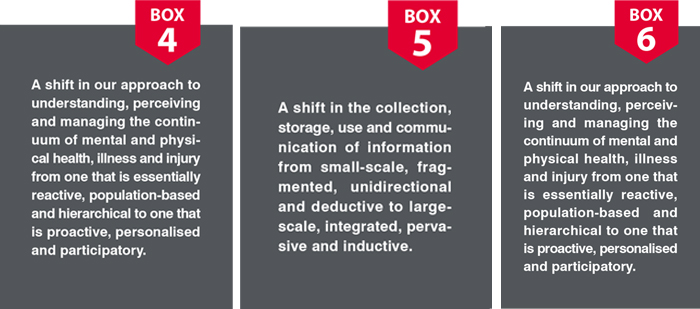Anyone involved with the life sciences sector can see how changes in technology, demographics and health economics are driving the industry. But these are merely symptoms; beneath them lie six great shifts that are transforming the industry and - determine which business models will survive and which will die.
Many languages have an equivalent to the expression “Seeing the forest for the trees”, meaning the ability to discern the big picture from little details. That ability is important in life but especially true for leaders of life sciences sector. Every day we are bombarded with news of innovative technology, tighter regulation and new approaches to controlling healthcare spending. The challenge is to see how these myriad factors are combining to shape the sector. Only by doing so do industry leaders stand any hope of preparing for the future. My work uses evolutionary science to enable this necessary foresight. In this article, I’ll talk a little about the basic ideas behind my research before moving onto the findings. I’ll conclude by suggesting some practical implications that you may like to act on.
All good science is based on a well-supported theory; an explanation of how the world works. Germ theory, atomic theory and gravity, for example, are all good explanations that help us understand and manage the world around us. To understand a sector as complicated as life sciences, we need a very good theory and luckily we have one; evolution by natural selection. Darwin’s profound insight was first used to explain the profusion of species on our planet, but, in more recent years, has been used to explain the behaviour of industries. This is possible because biological and economic systems are both examples of complex, adaptive systems. That is, they are both large collections of many different entities that interact with and adapt to each other. Whether we are trying to understand organisms or organisations, the basic science is the same.
Complex, adaptive systems are characterised by non-linear behaviour; it’s practically impossible to predict what will happen in the long run. Instead, we can observe how the countless, seemingly random interactions result gradually in patterns of behaviour. We call these emergent properties. The flocking behaviour of birds is an emergent property as are traffic jams. In my research, I consider how many different components of the life sciences sector combine to create emergent properties and what these properties imply for the competitive strategies of companies operating in this sector.
From the complex adaptive system of the life sciences sector, six important properties emerge: three from the industry’s social environment, three from its technological context. Each one is a shift from the way the world used to be to how it is transforming. And each shift creates an evolutionary selection pressure that favours some business models and discriminates against others. That’s why understanding these pressures and their implications is for the sector’s business leaders. In the following sections, I’ll describe the shifts, their origins and the selection pressures they create.
The great value shift (see BOX 1) is a fundamental change both in how value is defined and who defines it. It is also about an increase in the heterogeneity of value definition. It arises from the interaction of a number of separate social factors: demographics, healthcare inflation, rising expectations and disease patterns, amongst others.
The great value shift creates a selection pressure in favour of business models that can understand what multi-dimensional, customer-perceived value is and create that context-specific value through its combination of product, services and pricing. At the same time, the value shift creates a selection pressure against business models that continue to understand value only in terms of clinical outcomes as defined by healthcare professionals and value-creation only in terms of products.

The global shift (see BOX 2) is a wide-reaching change in what customers want and where they are. Importantly, it includes not just globalisation of demand but also fragmentation of customer needs to accommodate many non-clinical factors such as aesthetics and convenience. It creates multiple, diverse global segments within any disease or therapy area. It arises from the interaction of trade internationalisation, multinational corporations, increasing global wealth and subsequent maturation and fragmentation of customer needs.
The global shift applies a selection pressure in favour of business models that can understand the heterogeneity of their market and use that understanding to select which parts to focus upon and deliver value to those targeted customers on a global basis. At the same time, the value shift creates a selection pressure against business models that continue to view market heterogeneity only in clinical terms are unable to focus their resources appropriately and cannot deliver customer-specific value globally.

The network shift (see BOX 3) is a profound change in the way firms and other organisations structure themselves. It involves two factors: a reduction in the scope of what firms do within their own organisation and strengthening of their relationships with other organisations. In essence, it is a shift from big firms to networked organisations that are more complex, more fluid and less well defined than we are used to. It arises from the combination of changes in capital markets, changes in transaction costs within and between companies, the specialisation of corporate capabilities and the increasing need to manage business risk.
The network shift applies a selection pressure in favour of business models that can build and manage dynamic, symbiotic networks of different organisational entities and use that structure to create better returns, better manage risk or some combination of the two across any part of the value chain. At the same time, the network shift creates a selection pressure against business models that persist in unicentric structures that fail to optimise returns and risk across the value chain.

The systeomic shift (see BOX 4) is a shift of great consequence in the science and technology of the sector. It represents a move from a 19th century, Oslerian paradigm of medicine to a systems approach that seeks to support the efforts of individuals to maintain their own wellbeing. It is based on enabling technologies, such as gene sequencing, biomarkers and synthetic biology. These enable bioinformatics which in turn enables systems biology and so systems medicine.
The systeomic shift applies a selection pressure in favour of business models that can translate system medicine into an improvement of returns or a reduction risk at any point in the value chain. Conversely, it creates a selection pressure against business models that remain on a reductionist, hierarchical, population based understanding of disease or injury and the ways we manage them.
The information shift (see BOX 5) is much more than the expansion of information technology. It is an inflection point in what information we collect, from where and how we manipulate and apply it. Importantly, it influences not only how we discover and develop drugs, devices and other medical technologies but also how we produce products, deliver services and understand our customers’ needs. It is based upon platform technologies such as biosensors and improved chips, memories and batteries. These enable connectivity, wearable technology and artificial intelligence. Alongside this sit new capabilities in making sense of large-scale data.
The information shift applies a selection pressure in favour of business models that use information to improve returns or reduce risk, whether that is in R&D, Operations or Sales and Marketing. The obverse is that the information shift creates a selection pressure against business models that remain based on the use of information in a small-scale, fragmented, unidirectional and deductive manner.

The trimorphic shift (see BOX 6) is a three way polarisation in the way that companies focus their resources. In essence, it involves research-based firms becoming even more innovative, low-cost firms becoming incredibly lean and efficient and customer-centric firms becoming excellent at tailoring their value propositions to segments of one. It arises from advances in supply chain architectures, research and development technologies and sales and marketing methodologies. Alongside this sits the polarisation and specialisation of corporate cultures in line with their business model.
The trimorphic shift applies a selection pressure in favour of business models that focus on creating value by either product excellence, operational excellence or customer intimacy and by targeting the parts of the global market that will respond to such an offer Similarly, the trimorphic shift will apply a selection pressure against firms that do not focus their resources and adopt a strategy that “straddles” across the three approaches. Such firms, who may have good products, efficient operations and effective sales and marketing processes will find themselves at a disadvantage to those more focussed firms with either excellent products, hyper-efficient operations and the ability to identify and satisfy very small and specific customer segments.
The implications of the 6 great shifts are fundamental and real. In simple terms, firms will only survive if they adapt to the selection pressures created by the shifts. But these pressures are huge and often work against each other, just like the need to be big and fast on the African savannah. In practice, this means that firms must and will evolve into their chosen market habitats and in the process become ever more specialised. Roche, for example, is evolving into an outcome-oriented, research hyper-intensive firm, as recent acquisitions show. Medtronic is pushing towards a customer-intimate firm in which product development complements rather than leads its strategy. And Mylan is specialising into a hyper-efficient cost leader. Many other firms are evolving into networked entities, keeping only their differentiating activities in house. How they respond to the six shifts varies according to their chosen habitat: Elephants and Antelopes co-exist but use different approaches. In the same way, how companies use IT or systems medicine or create value differs, whilst still adapting to, the selection pressures implied by the shifts. And the take home? First, recognise these great shifts and don’t become too focussed on individual factors in the market. Second, understand that these shifts are inexorable and that you can only adapt to them, not stop them. Third, use the selection pressures as guides, allowing them to shape your choice of markets, strategies and structures. As someone once wisely said: It’s easy to lead a market – just work out where it’s going and get in front.
-- Issue 21 --